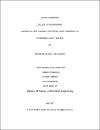| Abstract | Orthopedic surgeons are routinely faced with long-bone fractures. Their preferred surgical procedure for dealing with such cases is Intra-Medullary Nailing (IMN). The aforementioned surgery usually involves alignment of the fractured fragments of the long-bone followed by the insertion of a nail down its medullary canal. To prevent displacement of bone fragments, locking screws are inserted through the proximal and distal bone fragments into holes located at the proximal and distal regions of the nail. The most challenging part of IMN surgery is the location of the two distal holes of the nail after insertion, termed distal hole targeting. To find the exact location of the distal holes, several methods have been developed. The most popular method is the free-hand technique which involves the acquisition of radiographic images of the bone and nail to find the holes.
The objective of this thesis is to review the current state of the art regarding distal hole targeting and investigate the possibility of developing an alternative imaging technique for finding the distal holes that will be free of ionizing radiation. More specifically, this work concentrates on characterizing the suitability of Earth’s Field Nuclear Magnetic Resonance (EFNMR) for this particular application. The characterization of this imaging method is performed through a series of experiments. The investigated solution poses several major challenges like contrast between different regions, time consumption, and detecting NMR signals in less than 19 ml water volume. The first two problems are resolved by using a contrast agent, Copper (II) Sulfate (CuSO4), which decreases the relaxation time by 6-7 times. In effect, this has decreased the experimental time. For instance, the experimental time was reduced from 8.32 min to 1.36 min. For the third challenge where the target is to detect the signal for 1.8 ml, all the proposed solutions have not worked as expected. |


